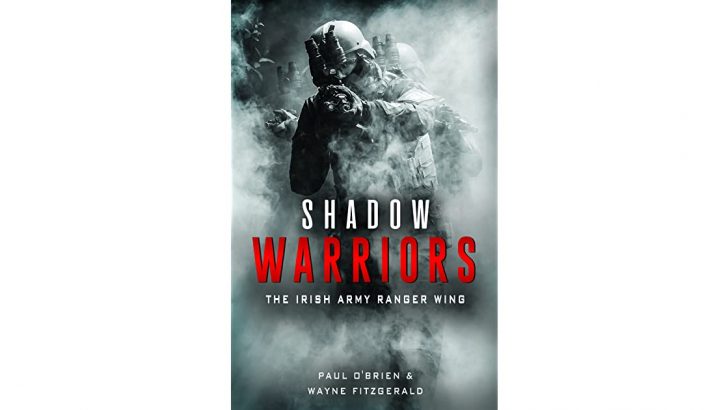Shadow Warriors: The Irish Army Ranger Wing
by Paul O’Brien and Wayne Fitzgerald Mercier Press (€12.99/£11.99)
Joe Carroll
Back in the 1980s, there used to be an advertisement on RTÉ showing a squad of soldiers in battledress, holding rifles jogging along a road while singing lustily: “We are Rangers, mighty, mighty Rangers.” And then the Rangers seemed to disappear from public view. Had they been disbanded?
Far from it, as this slim book reveals. The Irish Army Ranger Wing (ARW), often just called ‘The Wing’, is still the elite unit of the Defence Forces since it was formally set up in 1979. At home it is used discreetly to protect important foreign visitors, such as Queen Elizabeth, and it conducted intelligence operations along the Border during the Troubles. It could still be doing that, but we would not know.
The Rangers’ main duties now are abroad serving with United Nations missions in often fraught situations in countries such as Somalia, Mali, Chad, Liberia and East Timor. Four Rangers have died on these missions but their names are not made public.
Rangers are also used to protect Irish ministers on visits abroad.
Toughening-up
The emphasis in the book is on the rigorous training the applicants for the ARW have to undergo. Over 80% fail the first time and drop out or try again. The latest course lasts 38 weeks and is usually preceded by a toughening-up course of 15 weeks to weed out those who would not make it through the punishing 60km route marches, often at night, carrying 60lbs of equipment and averaging four kilometres an hour.
Over the years, new skills have been added such as parachuting and underwater operations. Urban warfare is practised with live ammunition in the ‘kill houses’ at the Curragh. Anti-terrorism skills are high on the list as terrorist attacks have increased since 9/11.
The idea of an elite unit first took form when 12 officers were chosen for special training in July 1969, just weeks before the Bogside in Derry erupted and soldiers were rushed to the Border to set up field hospitals. Earlier that year two officers were sent to Fort Benning in Georgia, USA, to train with the famous US Rangers. Three more officers were sent later that year to do a Commando training course in the UK.
Later still, two officers were sent to France for counter-terrorism training. This core of officers, trained volunteers from the different Irish Commands in specialist skills over five weeks after which they went back to their barracks as there was no specialist unit yet in existence.
This changed in March 1980 when Commandant Richard Heaslip was appointed the first commanding officer of the Army Ranger Wing.
The authors clearly received help from past Rangers and the current Defence Forces upper echelons”
Those who completed the course now got a shoulder tab with the word Fianóglach on it. Now you were a ‘mighty mighty Ranger’. Later came badges for combat divers, snipers and parachutists.
The authors clearly received help from past Rangers and the current Defence Forces upper echelons, but we are told that “it is Army Ranger Wing policy to neither confirm nor deny the information contained within this book”. However, there is much detail about the arms and equipment used in training and operations.
The ARW motto, translated from the Irish is: “The cleanliness of our hearts, the strength of our limbs and our commitment to our promise.”
The authors have given us a partial, but instructive glimpse into the secret world of the Rangers; they even provide tips to help the reader to apply if they feel a call to the flag and the service of their country.



